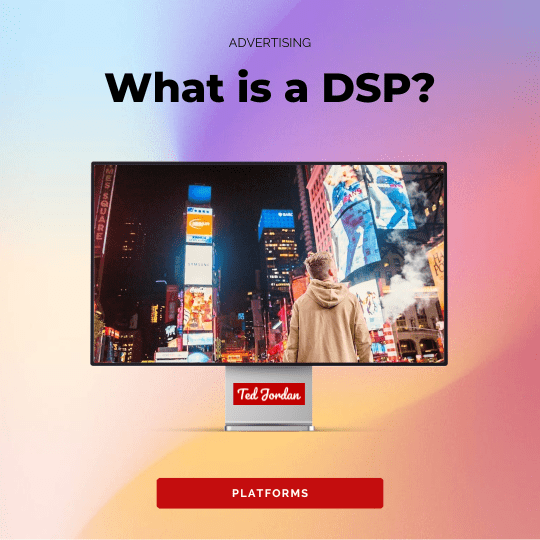In marketing, data is a key element to optimise campaigns: its value increases exponentially. Indeed, data is sold and bought to earn money and customers. There are different types of data (demographic, behaviour, earnings, etc.) and different levels; these can be combined. Today, let focus on 3rd party data.
You might have heard of 3rd party pixels and cookies because Google announced the end of third-party cookies, on Chrome, for the end of 2024 (they might postpone it again). Or you may know 3rd party data because of the multitude of cookie banners you have seen when visiting websites.
What is 3rd party data?
3rd party data is the data collected from various sources (websites, platforms) and managed by a third-party aggregator which does not have a direct relationship with the user or consumer. Data aggregators don’t collect data directly but obtain it from other companies.
Third-party data is not stored directly on a platform or a website but, instead, is sent to data aggregators platforms.

Third-party data examples
Surveys, feedback forms, emails, public demographic data, purchase history are examples of 3rd party data. 3rd party data can be public or can be purchased on data marketplaces or exchanges.
Difference between zero, 1st, 2nd and 3rd party data
Depending on how data is collected, it’s classified as zero, 1st, 2nd or 3rd party data.
- Zero-party data is the data a customer intentionally shares with a business. For example, website preferences.
- First-party data is the data collected directly by a brand after a consumer action. For example, an item added to a cart.
- Second-party data is someone else’s first-party data. 2nd party data is accessible with a partnership between businesses.
- Third-party data is aggregated from various sources.
Usually, marketers and advertisers gather data from different parties and platforms in order to be as specific and relevant as possible in their programmatic campaigns.
What are 3rd party pixels?
Pixels are snippets of code used to track actions such as ad impressions or actions on a website. 3rd party pixels are often used to track actions related to ads: impressions, views, clicks. They also collect data about users’ actions: email opening, conversions, etc.
Third-party tracking pixels are used by the majority of ad platforms including Facebook (Meta), TikTok, Outbrain and Yahoo. They can track data in a cookie-less environment.
To use 3rd party pixels, website owners must obtain users consent first and can’t add third-party pixels as 1st party ones. These rules might change depending on the county, state or country where the website delivers.
1st party pixel vs 3rd party pixel
The difference between 1st party and 3rd party pixels is the way they are set up and used. A 1st party pixel is, for example, added directly to each webpage by the website owner. This pixel may be needed to correctly display some information.
A 3rd party pixel, on the other hand, is a pixel added to a website or an ad, which belongs to an external platform. For example, a Facebook pixel added to a website is a 3rd party pixel. Users are not in direct contact with Facebook but their data is sent to the Facebook platform.
Pixels must not be confused with cookies, which can’t track data between platforms. Pixels can.
3rd party cookies explained
3rd party cookies are cookies mainly used for web advertising and digital marketing. They are placed on a website by a different website than the one visited by a user. The data tracked by a 3rd party is sent to the 3rd party server or platform and not to the visited website.
When visiting a website – mostly in Europe with GDPR – users are asked to accept some, all, or no cookies in a banner or a pop-up window. Website owners are not allowed to use cookies if users don’t give their consent.
While 1st party cookies are used to enhance user experience, 3rd party cookies are mainly used for advertising purposes. For instance, to display ads to users who visited a specific website or who did a specific action.

The use of 3rd party cookies is criticised because users are worried about the use of their data and their privacy. Also, 3rd party cookies can slow down webpages if not used properly.
The end of 3rd party cookies
3rd party cookies are less and less used, mainly because of Google’s announcement that third-party cookies will be depreciated on Chrome, back in 2020. First, this news shook the digital world but knowing Google postponed 3rd party cookies depreciation several times, advertisers have now time to adjust their strategy. Will this be the end of 3rd party cookies?
It will be, eventually, for Chrome users.
Third-party cookies are essential for critical functions like sign-in, fraud protection or embed third-party content on websites.
Why is 3rd party data important
Third-party cookies might disappear but third-party data is crucial in marketing and will continue to be used. Here are some reasons why 3rd party data is important:
- Personalised content: 3rd party cookies allow advertisers to personalise ads based on users’ interests, demography, browsing history, etc. These ads are then more relevant and may seem less intrusive to consumers.
- Cross device preferences and targeting: 3rd data pixels allow advertisers to deliver ads across various platforms. For example, through CTV (Connected TV) and mobile.
- A/B testing: A/B testing is key in digital marketing and programmatic to find the best ads for specific users or audiences. 3rd party data allows these tests to done in good conditions.
- Insights: additional insights are gathered thanks to 3rd party data, which is good for advertisers but also for market research.
Of course, combining data from all parties (zero, 1st, 2nd and 3rd) makes an impact regarding data relevance.
Now, you know how 3rd party pixels and cookies work and why they are so important.
Want to know more about pixels? Check this article.
If you wish to become a programmatic expert, we recommend you this online course.






